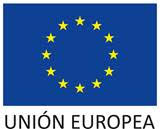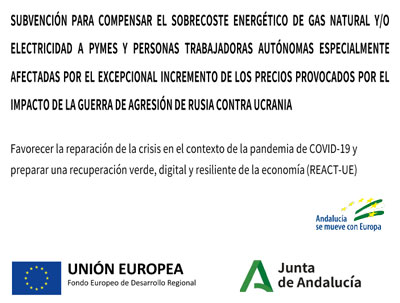Unfortunately, that’s a best-case scenario and not helpful in the real world. Our flexible digital workspace gives you everything necessary to ensure everyone follows the contingency plan when they need to. Once you start thinking about it, you’ll realize how many things you rely on to avoid going wrong, even for fundamental processes. Without that backup, the team might have to recreate the entire website from memory or build a website from scratch. That’s a significant expense and can mean several extra days (or weeks!) of downtime. A simple example of a contingency plan is to back up all your website data.
- Contingency planning is the process of creating a backup plan or several possible plans.
- So rather than being reactive like a contingency plan, a risk management plan looks to stop adverse events from happening in the first place.
- Testing the disaster recovery plan ensures systems can be restored as rapidly as possible in worst-case scenarios.
- Many are familiar with contingency plans for natural disasters; businesses and governments often prepare for floods, earthquakes, or tornadoes.
- Here are some model scenarios that demonstrate how different kinds of businesses would prepare to face risks.
Propose Your Draft to Stakeholders
A helpful business contingency plan also offers a mechanism for tracking progress and reviewing the plan’s effectiveness. Learn how Asana’s operations team uses standardized processes to streamline strategic planning—no matter how many stakeholders are involved. When you’re launching a new product, team, or even a new business, strategic planning templates keep you laser-focused and on task. A business plan is the first step to start your business and secure financing. Once your contingency plan has been approved by and shared with all the relevant parties, you’ll need to test it to make sure your crisis management works as intended.
Read this guide to contingency planning to find tips for improving your contingency preparedness. Identifies and addresses potential risks and vulnerabilities, reducing the likelihood and impact of future incidents. Ensures rapid recovery of IT systems and business operations, reducing the impact of disruptions. With ClickUp’s Hierarchy, you can maintain a clear overview of your objectives, allowing for efficient project planning, project management, and execution. Its structured sections make it easier to categorize, manage, and identify potential risks. The Workplace Emergency Action Plan Template helps you map out evacuation plans, contact lists, and protocols to ensure everyone’s safety.
This contingency plan template guides you through identifying potential risks, mapping response strategies, and assigning responsibilities. This tool aids businesses in identifying potential risks, allocating resources, using risk probability, and setting a course of action to mitigate or minimize the impacts of unforeseen events. It’s your road map to continuity in the face of unexpected events and hurdles, be it a financial downturn, a tech malfunction, or an operational interruption. For example, let’s say you’ve identified a potential staff shortage as a likely and severe risk. This would significantly impact normal operations, so you want to create a contingency plan to prepare for it. Each person on your team has a very particular skill set, and it would be difficult to manage team responsibilities if more than one person left at the same time.
Simplify your GTM strategy with a go-to-market strategy template that aligns teams and keeps work on track. Even if your contingency plan is working as intended when you test it, there’s no guarantee that this will remain the case. Wrike’s analytics can also help you gauge the likelihood of certain incidents happening. For example, if you run a services business, you can look back at past client engagements to see the probability of client churn by the month of the engagement. No matter how well you prepare, not all of the plans you make in your business will work out as you intended. To do that, your management team needs a clear understanding of the project’s status at all times.
Step 4. Develop Contingency Strategies
You might also want to share your contingency plan draft with employees who are in the same department, just to get their feedback. For example, you could use Wrike to pin the contingency plan to the relevant project management board, ensuring that all relevant parties have access to it. When starting to compose your plan, you have to make sure that it follows the standard document flow. Try to use a format that will keep your contingency plan neatly organized and easy to understand. A contingency plan can be a lot of work to create, but if you ever need to use it, you’ll be glad you made one.
Purpose and benefits of a disaster recovery plan
These tests help identify any weaknesses and ensure that all parts of the plan are actionable. Once the key risks are identified, it’s essential to determine how they could impact your business. Once the process list is created, consider what might disrupt business continuity.
Learn
Contingency plans often require an incident to meet certain criteria before the plan is enacted. A contingency plan is only enacted if a scenario meets a certain criteria. When teams develop the contingency plan, they also develop the criteria a situation needs to meet before that plan is executed. Planning for future business initiatives should include crafting a backup plan in the event something doesn’t go as planned.
This strategic approach is designed to identify potential risks and develop actionable response plans to mitigate disruptions caused by unforeseen disasters and escalating problems. A contingency plan helps in times of crisis or unexpected events by providing a clear course of action to minimize disruptions and protect business operations. It allows organizations to respond quickly to challenges such as data breaches, natural disasters, or financial losses, ensuring continuity and reducing downtime.
- Learn what a contingency plan is and how to go about creating one for your company.
- Project managers are fully aware of how easy it can be for a single unplanned event to completely derail a project.
- These must be housed in a way or location that is accessible should operations be compromised.
- A contingency plan, also known as an alternate plan or plan B, is a predefined set of actions that you will implement in response to specific future events that put your project or business at risk.
- Here you can identify important risks that could affect operations, and analyze what impact they may have on your business.
Whether it is a large corporation or small business, resources are much-needed to sustain them. You are preparing a complete list of the resources like the budget and equipment you have to deal with certain events. This will make it easier for you to know what your company has and lacks to prevent risks from taking place.
They’re your roadmap to a business continuity plan and success, despite unexpected hurdles with significant risks. A contingency plan template is a replicable outline of a contingency plan that you can use in case of an unexpected emergency, such as a response plan to natural disasters. Creating a contingency plan template can help prevent your business from experiencing major risk. This way, if you’re faced with an emergency, your team has a strategy in place to keep your business functioning.It’s not enough to just have a plan—if there’s an emergency, you need to move quickly.
When business operations are disrupted by a negative event, good contingency planning gives an organization’s response structure and discipline. A contingency plan template provides a step-by-step process to communicate actionable items in the event of a disaster or disruption. The document takes the guesswork out of emergency planning, so you can protect resources, minimize interruptions, and identify go-to team contacts. This easy-to-use information technology (IT) contingency plan presentation template is the perfect solution for presenting your IT contingency plan to key stakeholders. Easily gain buy-in from team members, management and other stakeholders with the all-in-one, IT-specific solution for outlining and refining your IT department’s service contingency plan.
Stop Project Failure With a Contingency Plan
Facilitates the safeguarding and restoration of critical data, minimizing data loss during incidents. Nothing on this page creates an attorney client relationship and is not legal advice. Create a project closure template to help your contingency plan example team tie up loose ends and finish their projects with confidence.
Process Map
A marketing strategy template is a useful tool that helps your marketing team achieve their goals. In this post, we’ll take you through the four key steps to create a strategic plan and how to implement it with your team. Once the contingency plan has been finalized, you’ll also need to share it with the employees who are responsible for implementing it. Thanks to Wrike’s collaboration features, employees who have feedback could then comment on the contingency plan inside the plan document itself. If you’re not sure where to start with any of those risk assessments, we have a risk analysis template that can help you get the ball rolling. Do you have a number of employees working on one big list of possible risks?
Sometimes, you’ll be able to see an incident coming, such as a client quitting after they’ve complained on multiple occasions. Other times, your plans might be derailed by something completely unexpected — as we all found out during the pandemic. The more managers who will participate in the plan, the more productive and successful it will become. Creating a project on a work management platform is a great way of distributing the plan and ensuring everyone has a step-by-step guide for how to enact it. Contingency planning is all about staying ahead of the game—identifying possible threats and putting strategies in place before anything goes wrong. When starting a project or business, most people plan according to the status quo.
This project management contingency plan template is ideal for creating a comprehensive contingency plan for any type of project. Use this template to define risks and their events or triggers, consider budgetary implications, and define your potential plans of action. Contingency planning fits into overall business continuity planning by focusing on specific actions to address potential threats, ensuring critical operations can continue with minimal disruption. While business continuity planning covers a broad strategy to maintain operations during disruptions, contingency planning provides detailed steps to manage and mitigate specific risks effectively. You can begin the contingency planning process by completing a contingency plan template so that you’re adequately prepared. By recording accurate and thorough information to ready yourself for an emergency, you can determine your priorities, relocation strategy, and recovery plan details.



Leave a Reply